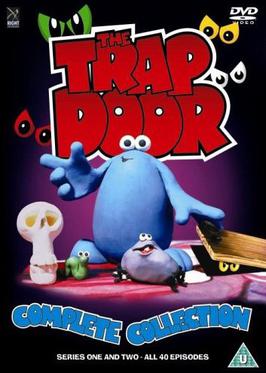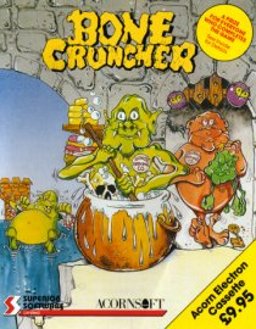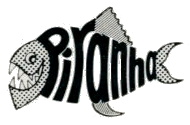Clone or Clones or Cloning or Cloned or The Clone may refer to:
Lotus or LOTUS may refer to:
Quicksilver may refer to:
A trap is a device used for trapping animals.
Demo, usually short for demonstration, may refer to:

The Trap Door is a British animated television series, originally shown in the United Kingdom in 1986. The plot revolves around the daily lives and the misadventures of a group of monsters living in a castle. These include a blue creature called Berk, a spider-like creature called Drutt, and Boni, who was a skull of unknown origin. Although the emphasis was on humour and the show was marketed as a children's programme, it drew much from horror and dark fantasy.
"Game over" is a message often displayed at the end of a video game.
Wildfire is a fire in an area of combustible vegetation that occurs in the countryside or rural areas.
Spider-Man is a Marvel Comics superhero.

Bone Cruncher is a puzzle video game for the Acorn Electron, BBC Micro, and Commodore 64 first published by Superior Software in 1987. It uses the "rocks and diamonds" mechanics of Boulder Dash. An Amiga version was released in 1988.
A machine is a device that uses energy to perform some activity or task.

The Trap Door is a video game published for the ZX Spectrum in 1986 by Piranha Software and ported to the Amstrad CPC and Commodore 64 by Five Ways Software. It was written by Don Priestley and based on the British children's television show of the same name.
Don Priestley is a teacher and former video game programmer who wrote over 20 commercial games for the ZX81 and ZX Spectrum home computers between 1982 and 1989. Despite successful releases for DK'Tronics, such as 3D Tanx and Maziacs, Priestley returned to teaching in the late 1980s, claiming changes in the video game industry did not suit his style of work.
Beast most often refers to:

Piranha Software was a short-lived video game publishing label created by Macmillan Publishers in 1986 and closed eighteen months later. In that time it gained a reputation for its unusual output from well known developers such as Don Priestley, Design Design and Delta 4. The majority of their games featured licensed properties including the first video game based on the Discworld novels and two games based on the animated television series The Trap Door.
This page is based on this
Wikipedia article Text is available under the
CC BY-SA 4.0 license; additional terms may apply.
Images, videos and audio are available under their respective licenses.



